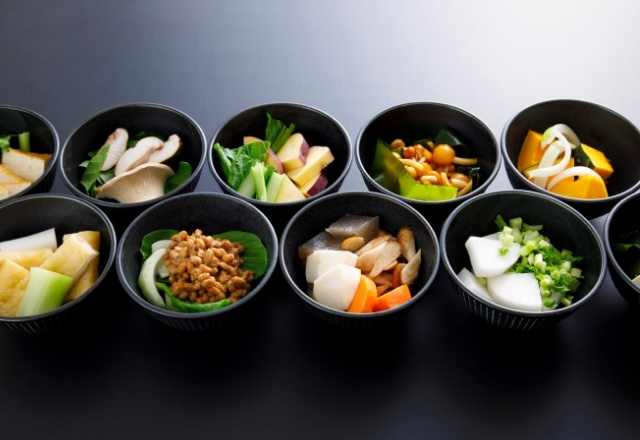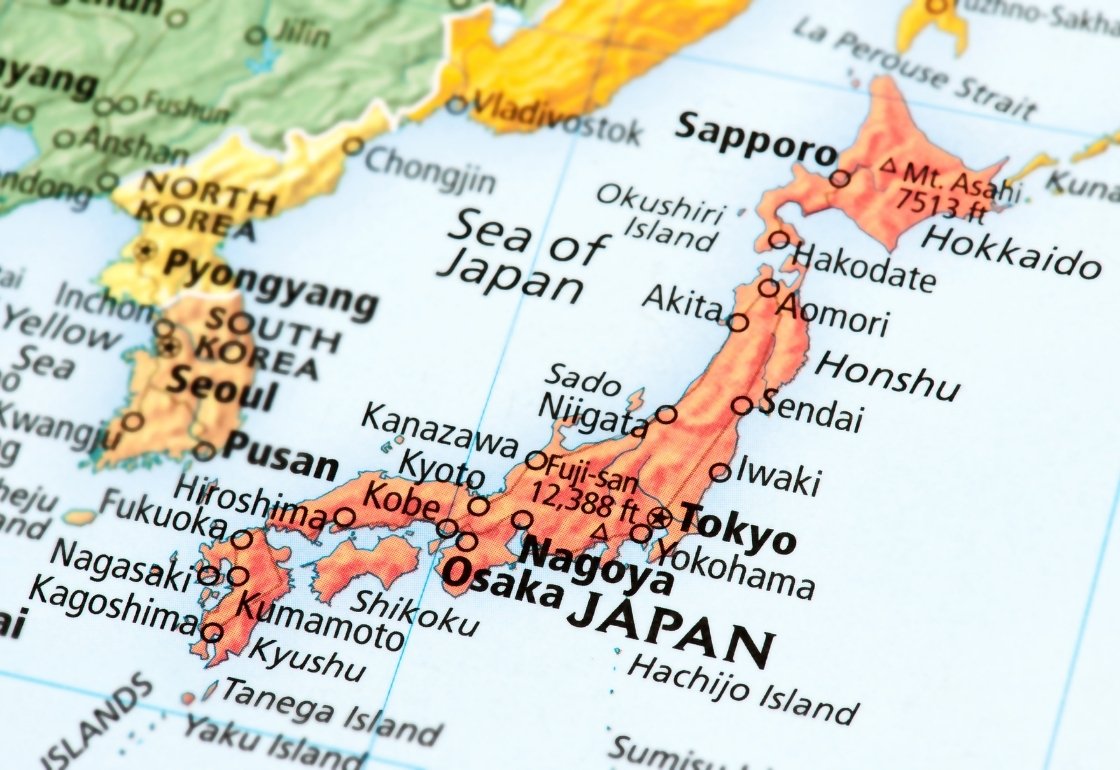In Japan, eating with the seasons isn’t just a trend, it’s a philosophy deeply rooted in daily life. Known as “shun” (旬), this concept celebrates ingredients at their peak of flavor, freshness, and nutrition. From cherry blossoms in spring to warm hotpots in winter, each season in Japan brings a new palette of tastes, colors, and traditions to the table.
Japanese cuisine (washoku, 和食) emphasizes harmony, between nature, people, and food. That’s why even convenience stores change their menus every few months, and restaurants proudly highlight seasonal specialties. By following the rhythm of nature, Japanese cooking encourages mindfulness and appreciation for the moment, a reminder that good food is best enjoyed when it’s in season.
In this article, we’ll explore traditional and modern Japanese recipes that capture the essence of each season — spring, summer, autumn, and winter — along with ingredients you can find or substitute easily at home.
🌸 Spring (Haru 春): Fresh and Delicate Flavors
After Japan’s long winter, spring brings a sense of renewal, both in nature and in the kitchen. It’s a season filled with light, refreshing dishes that celebrate new beginnings and the first harvest of the year. Many spring recipes highlight ingredients like bamboo shoots (takenoko), strawberries, and sakura (cherry blossoms), all symbols of freshness and hope.
Seasonal Ingredients
- Bamboo shoots (たけのこ / takenoko) – tender and slightly sweet, often simmered with rice or dashi.
- Rapeseed blossoms (菜の花 / nanohana) – young greens with a mild bitterness, perfect in salads or light stir-fries.
- Sakura (桜 / cherry blossoms) – used to flavor sweets and teas, bringing a subtle floral aroma.
- Strawberries (いちご / ichigo) – the highlight of many Japanese desserts during spring.
Typical Spring Dishes
Sakura Mochi (桜餅) – sweet rice cakes filled with red bean paste and wrapped in a salted cherry leaf. These are often enjoyed during hanami (cherry blossom viewing) picnics.
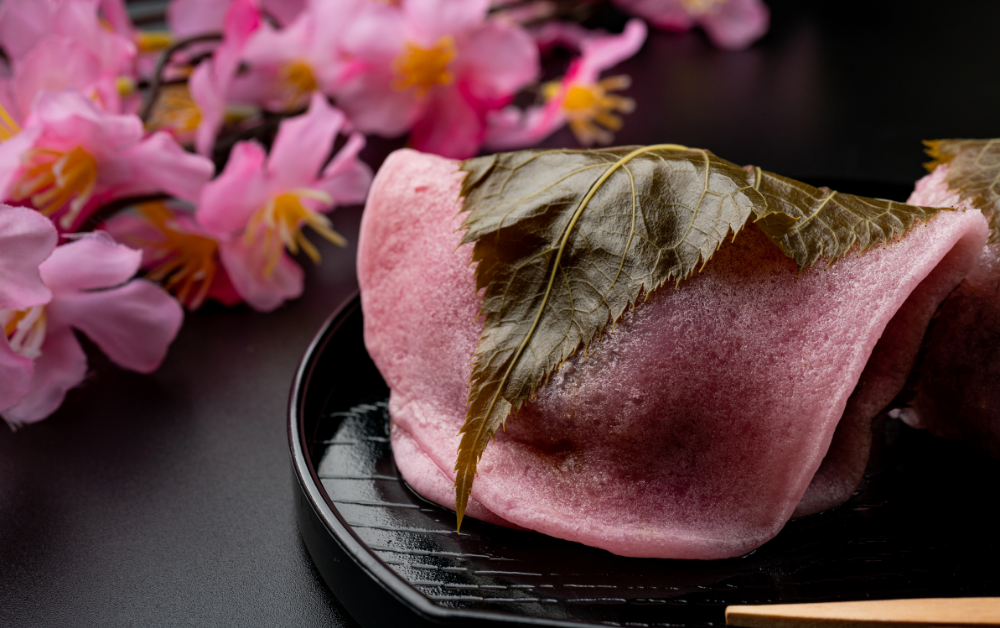
Takenoko Gohan (たけのこご飯) – rice cooked with bamboo shoots, soy sauce, and a touch of sake, giving it a gentle umami flavor.
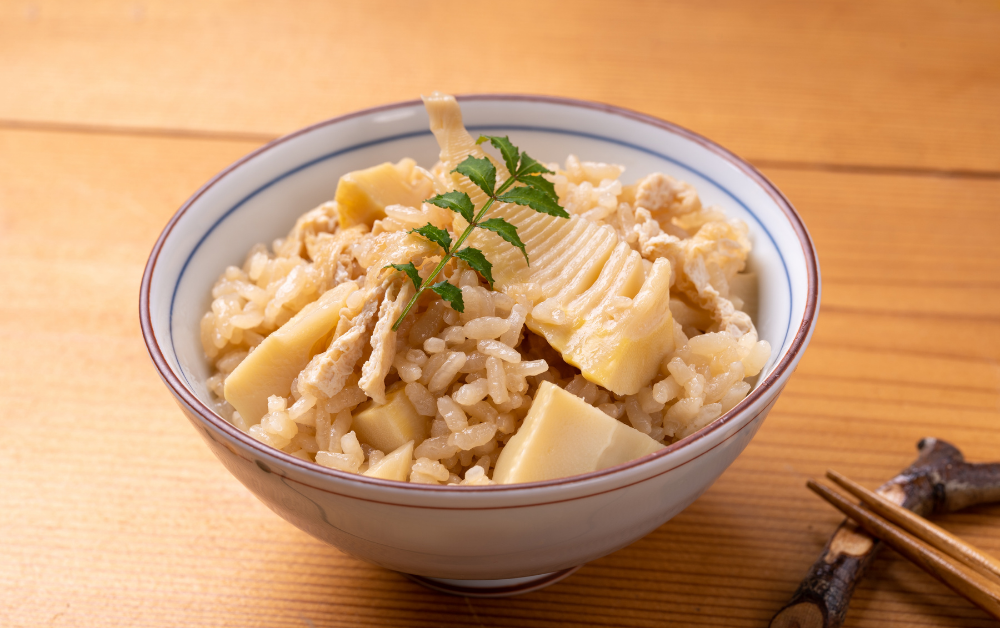
Nanohana Ohitashi (菜の花おひたし) – blanched rapeseed greens served with soy sauce and topped with bonito flakes.
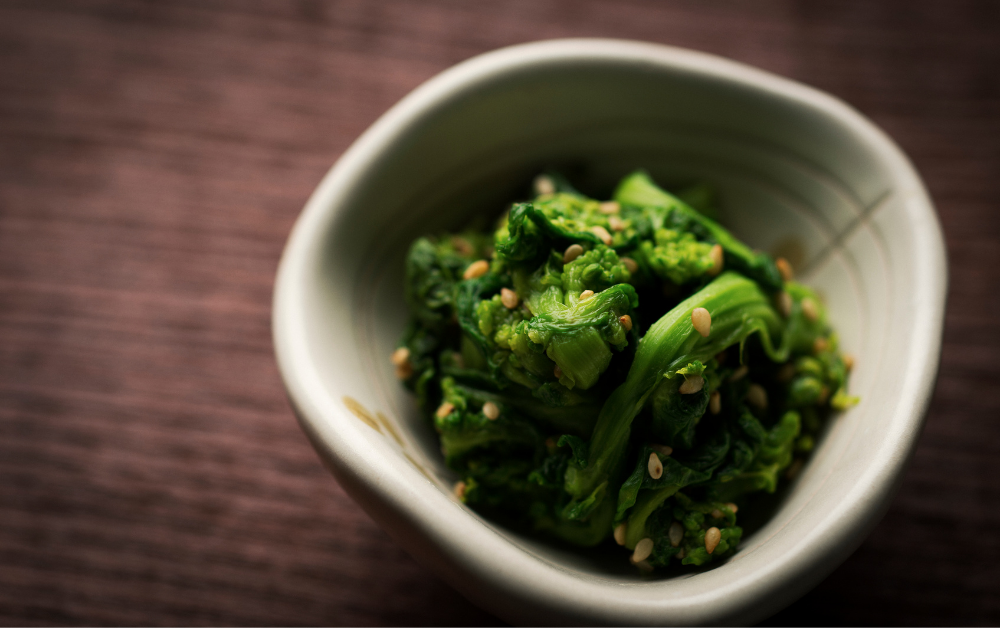
Try it at home: Simple Bamboo Shoot Rice (Takenoko Gohan)
Ingredients:
- 1 cup Japanese rice
- 1 small bamboo shoot (boiled and sliced)
- 1 tbsp soy sauce
- 1 tbsp mirin
- 1 tbsp sake
- 1 ½ cups dashi (Japanese stock)
Instructions:
- Rinse the rice and let it soak for 30 minutes.
- Combine the rice, bamboo shoots, and seasonings in a rice cooker.
- Cook as usual — the bamboo will infuse the rice with its delicate, nutty aroma.
Tip: Sprinkle chopped mitsuba (Japanese parsley) on top for a touch of color and freshness.
☀️ Summer (Natsu 夏): Light and Refreshing Meals
Summer in Japan can be hot and humid, especially in cities like Tokyo or Osaka. To beat the heat, Japanese cuisine turns to cool, refreshing, and easy-to-digest dishes. Meals are lighter, portions smaller, and ingredients chosen for their ability to refresh and energize the body.
You’ll find foods like cold noodles, crispy vegetables, and grilled eel, each designed to help people stay strong and comfortable through the hottest months.
Seasonal Ingredients
- Cucumber (きゅうり / kyūri) – hydrating and crisp, used in salads and pickles.
- Eggplant (なす / nasu) – grilled, simmered, or chilled; absorbs flavor beautifully.
- Eel (うなぎ / unagi) – eaten for stamina during midsummer’s day (Doyō no Ushi no Hi).
- Watermelon (スイカ / suika) – a summer favorite, often enjoyed at the beach.
Typical Summer Dishes
Hiyashi Chūka (冷やし中華) – cold ramen topped with sliced cucumber, ham, egg, and tomato, served with a tangy soy-vinegar dressing.
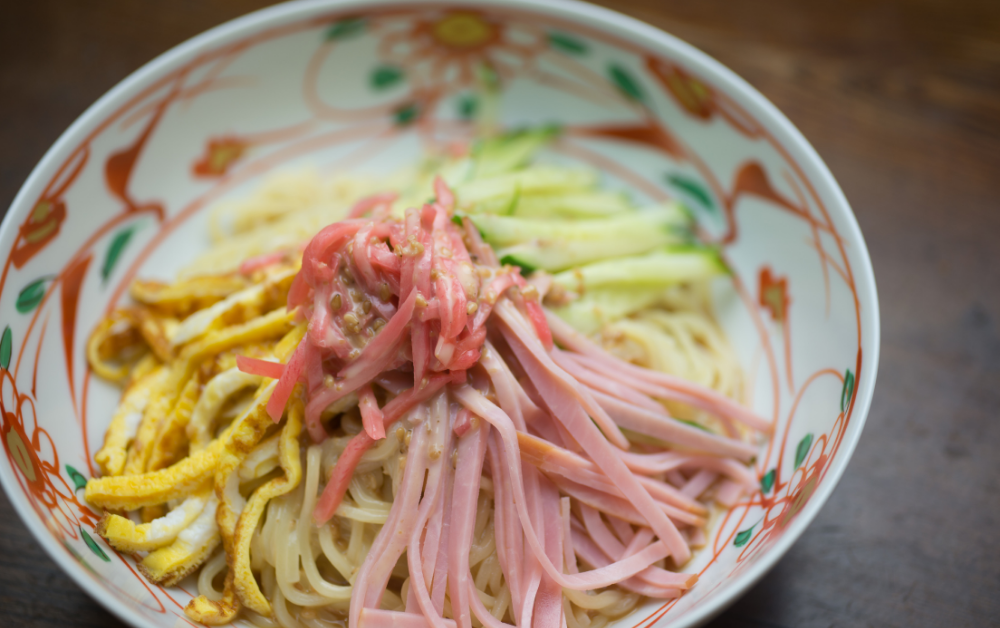
Sōmen (そうめん) – thin white noodles served chilled with a dipping sauce (mentsuyu), often eaten with ice cubes for extra coolness.
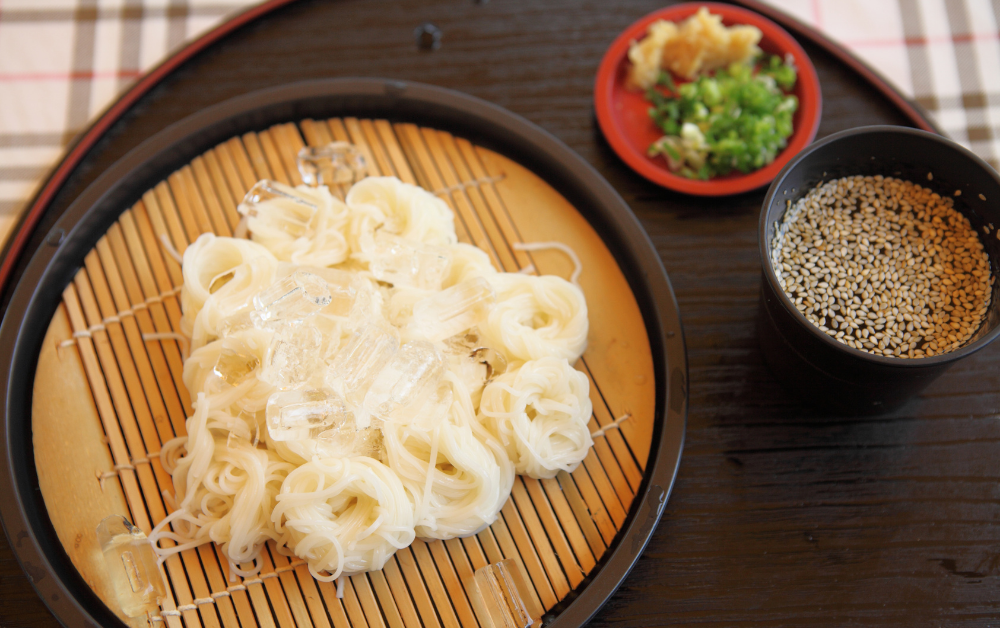
Unadon (うな丼) – grilled eel glazed with sweet soy sauce, served over rice for energy during the hottest days.
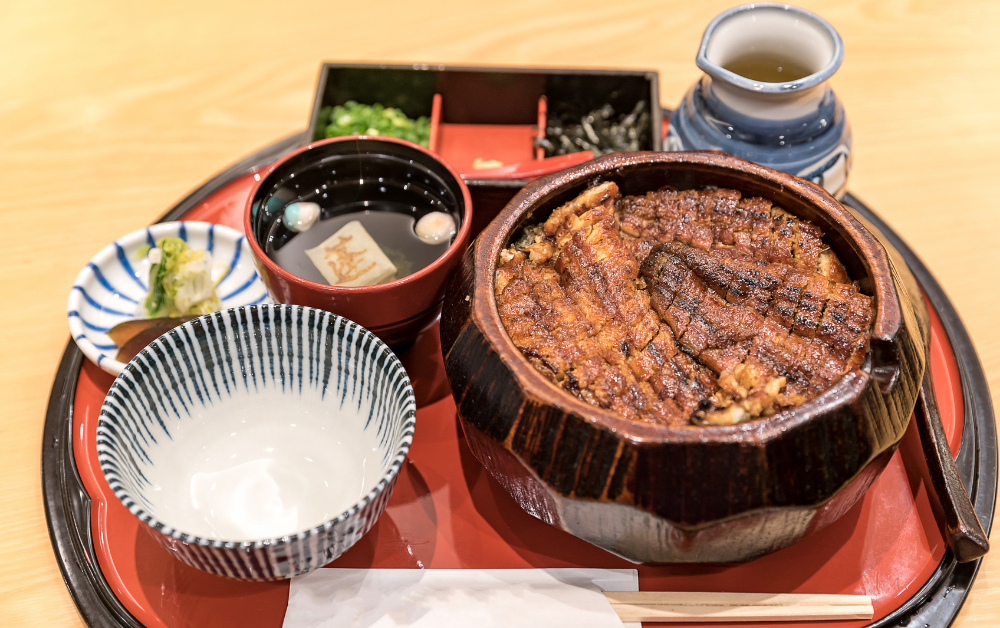
Try it at home: Cold Sōmen Noodles
Ingredients:
- 100 g sōmen noodles
- 1 cup mentsuyu (store-bought noodle dipping sauce or homemade with soy sauce, mirin, and dashi)
- Optional toppings: grated ginger, green onions, shredded nori, or sesame seeds
Instructions:
- Boil the sōmen noodles for about 2–3 minutes until tender.
- Rinse under cold water and place in a bowl of ice water.
- Serve with chilled mentsuyu and your choice of toppings.
Tip: For a fun summer twist, try nagashi sōmen (flowing noodles) — a playful tradition where noodles slide down a bamboo chute filled with cold water!
🍁 Autumn (Aki 秋): Earthy and Comforting
Autumn in Japan is often called “the season of appetite” (食欲の秋 / shokuyoku no aki), and for good reason. As temperatures cool, people naturally crave warm, hearty dishes and earthy flavors. It’s the season of harvest, rice, mushrooms, chestnuts, and sweet potatoes take center stage.
From cozy bowls of rice cooked with seasonal ingredients to roasted chestnuts sold on street corners, autumn cooking in Japan is all about comfort and abundance.
Seasonal Ingredients
- Matsutake mushrooms (松茸 / matsutake) – prized for their rich aroma; a true autumn delicacy.
- Chestnuts (栗 / kuri) – sweet and starchy, used in rice, cakes, and desserts.
- Sweet potatoes (さつまいも / satsumaimo) – roasted, fried, or mashed; a beloved fall snack.
- Persimmons (柿 / kaki) – juicy orange fruits enjoyed fresh or dried (hoshigaki).
Typical Autumn Dishes
Matsutake Gohan (松茸ご飯) – aromatic rice cooked with matsutake mushrooms, soy sauce, and dashi.
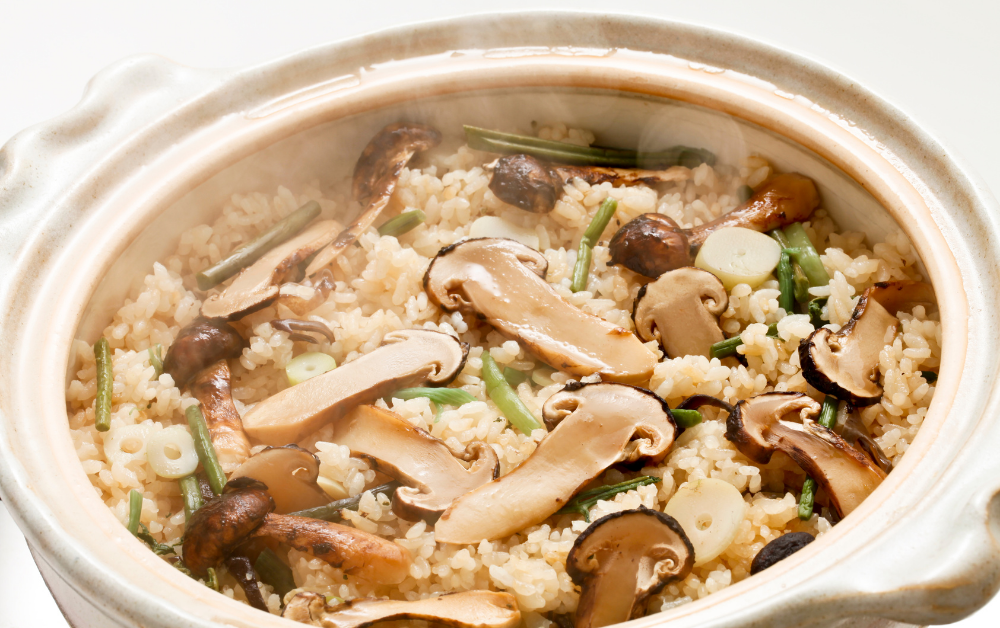
Kuri Gohan (栗ご飯) – chestnut rice that’s subtly sweet and comforting.
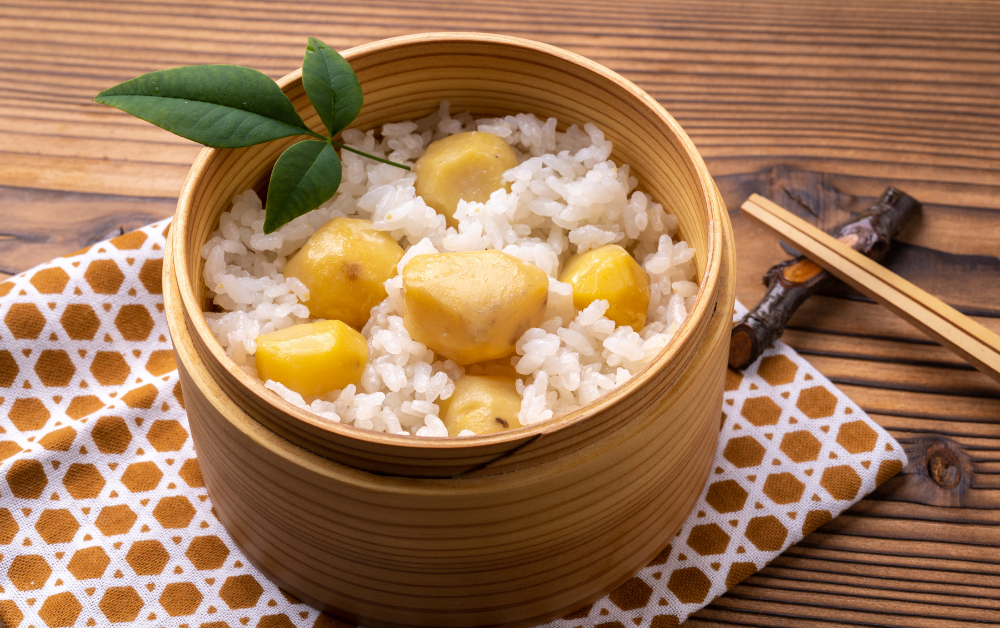
Satsumaimo Tempura (さつまいも天ぷら) – lightly battered and fried sweet potato slices, crispy outside and soft inside.
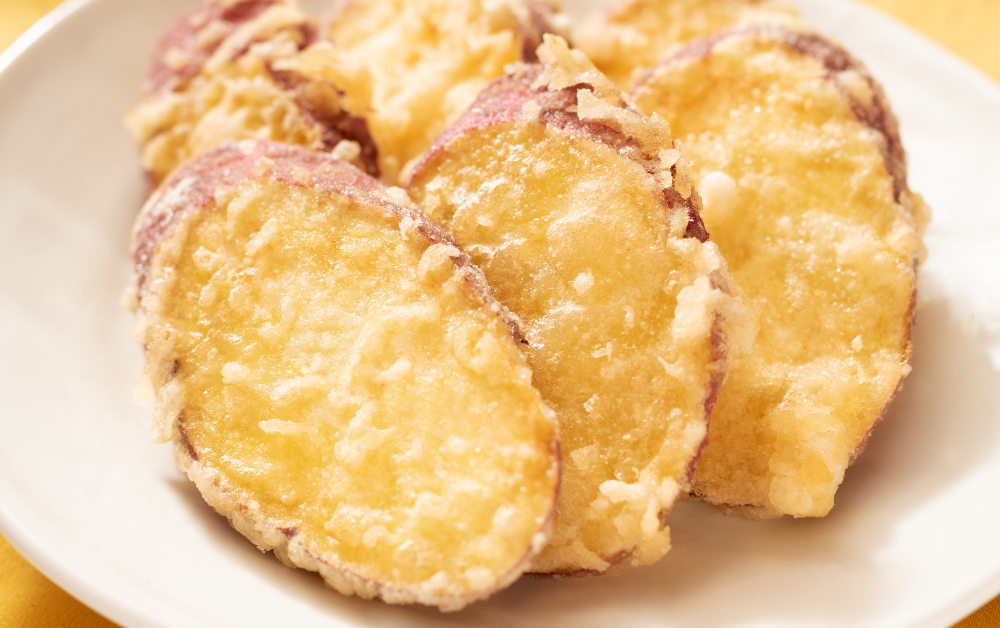
Try it at home: Chestnut Rice (Kuri Gohan)
Ingredients:
- 1 cup Japanese short-grain rice
- 8–10 boiled chestnuts, peeled and halved
- 1 tbsp soy sauce
- 1 tbsp mirin
- 1 ½ cups water or light dashi
Instructions:
- Rinse and soak the rice for 30 minutes.
- Combine all ingredients in a rice cooker or pot.
- Cook until fluffy, then gently mix to distribute the chestnuts.
Tip: Sprinkle black sesame seeds on top for extra color and contrast.
Autumn meals are often enjoyed while admiring the fall foliage (kōyō), whether during a weekend picnic or at home with a hot bowl of miso soup. It’s a reminder that food, like nature, is meant to be savored slowly.
❄️ Winter (Fuyu 冬): Warm and Nourishing
Winter in Japan invites everyone to slow down, gather around the table, and share warming, hearty meals. As the temperature drops, Japanese cuisine focuses on comfort, nutrition, and togetherness, perfect for cozy nights under the kotatsu (a low heated table).
Dishes like hotpot (nabe) and oden take center stage, bringing families and friends together to enjoy food that warms both the body and the heart. Citrus fruits like yuzu also appear, adding brightness and fragrance to cold winter days.
Seasonal Ingredients
- Daikon radish (大根) – mild and juicy, perfect in soups and stews.
- Cabbage (キャベツ) – widely used in hotpots and gyoza fillings.
- Yuzu (柚子) – a fragrant Japanese citrus used in teas, sauces, and baths!
- Mochi (餅) – sticky rice cakes eaten during New Year celebrations.
Typical Winter Dishes
Oden (おでん) – a comforting stew of daikon, boiled eggs, tofu, and fish cakes simmered in dashi broth. Found in convenience stores all winter long.
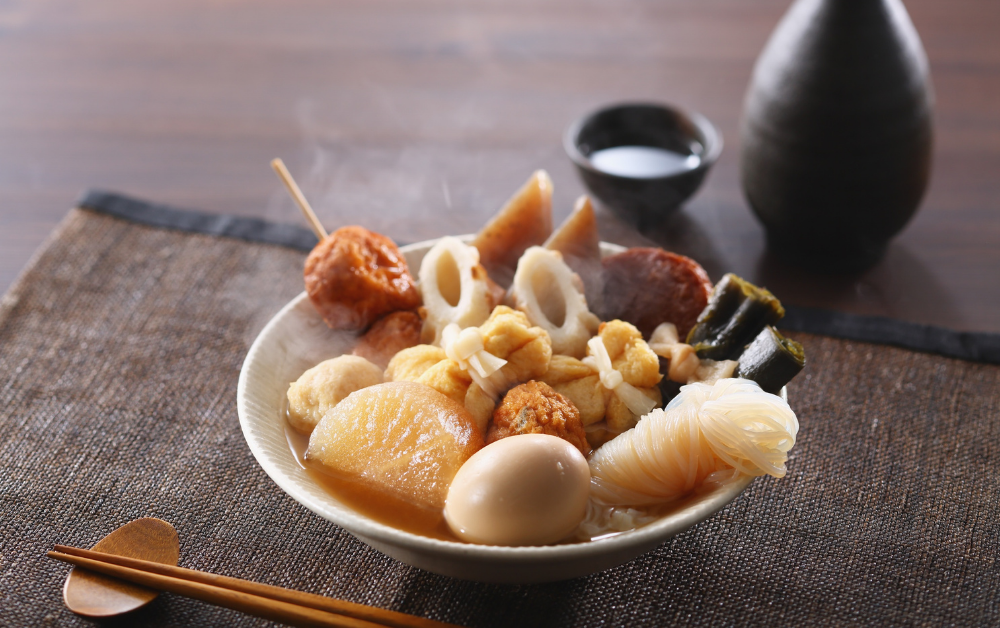
Nabe (鍋) – communal hotpot dishes such as sukiyaki, shabu-shabu, or kimchi nabe, where everyone cooks together at the table.
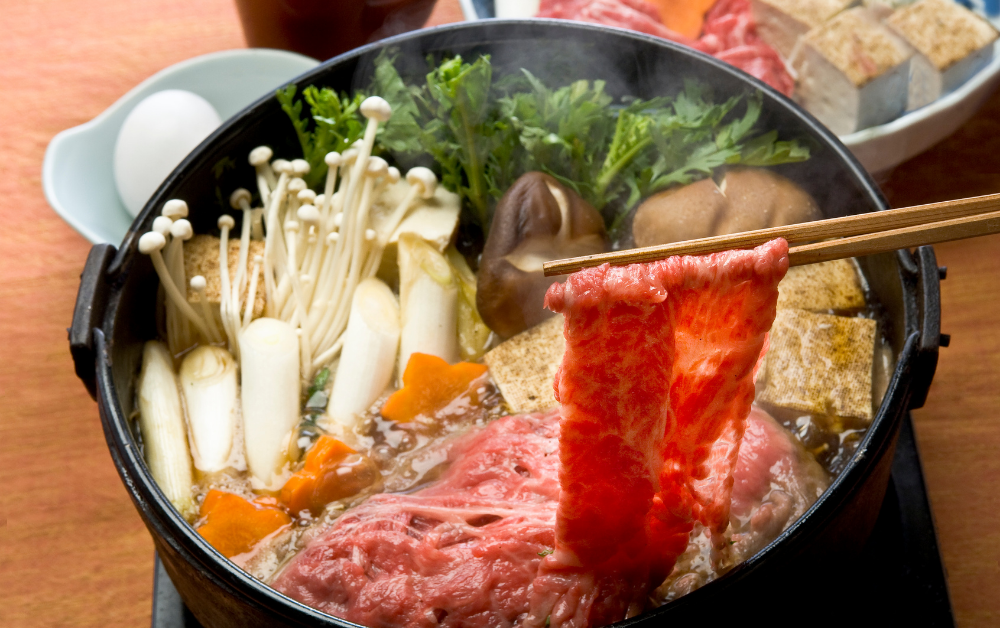
Ozōni (お雑煮) – a traditional New Year’s soup with mochi, vegetables, and chicken or seafood, varying by region.
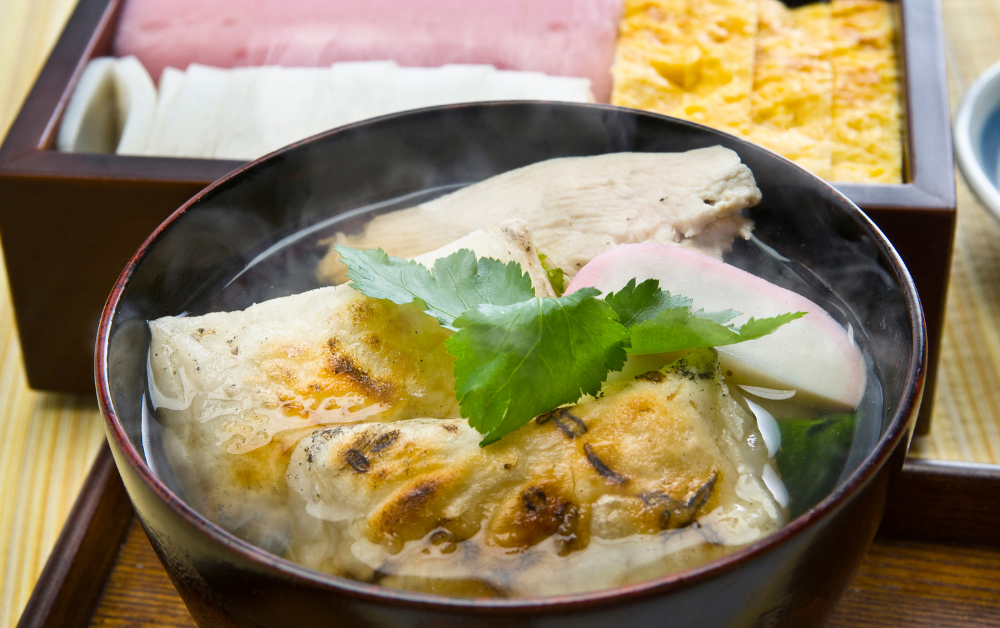
Try it at home: Simple Oden Hotpot
Ingredients:
- 1 daikon radish (peeled and cut into thick rounds)
- 2 boiled eggs
- 1 block firm tofu (cut into cubes)
- 1 pack fish cakes (kamaboko or chikuwa)
- 1.5 L dashi broth
- 2 tbsp soy sauce
- 1 tbsp mirin
Instructions:
- Simmer daikon in the broth until tender.
- Add tofu, eggs, and fish cakes.
- Season with soy sauce and mirin, and let it cook on low heat for 30–40 minutes.
Tip: Serve with a dab of karashi (Japanese mustard) for a spicy kick!
Winter recipes in Japan are all about sharing warmth, not just through food, but through connection. Whether it’s eating oden with friends or sipping yuzu tea on a quiet night, these dishes embody Japan’s sense of community and appreciation for the simple joys of the season.
For more recipes here is a list of famous Japanese websites :
🍱 Conclusion: Cooking Through the Seasons
From the delicate taste of cherry blossoms in spring to the cozy comfort of hotpot in winter, Japanese cuisine is a reflection of nature’s rhythm and harmony. Each season offers something unique — new ingredients, colors, and even emotions, reminding us to appreciate the passing of time and the beauty of what’s right in front of us.
If you want to truly experience Japan’s culture, start with its food. Cooking seasonal dishes at home is a wonderful way to connect with Japanese traditions, wherever you are in the world. Try one recipe per season, experiment with local ingredients, and enjoy the practice of eating with the seasons, “shun” (旬).
And if you’d like to go even deeper, why not explore Japan in person?
✨ Learn the language, live the culture, and taste every season for yourself.




